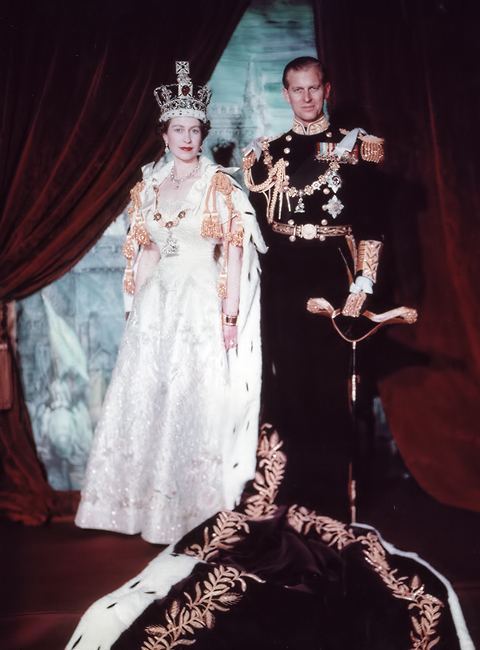
Whatever your feelings on the British monarchy, Elizabeth II was one of the great Londoners — and a woman who has influenced every corner of the capital.
You can't spend long in London without riding on a tube line named after the monarch; passing a park, theatre or boat with her name on it; spotting her face on a souvenir tea towel; or stumbling across a piece of Queen Elizabeth-themed street art.
Even 'Big Ben' — the much-misnamed Houses of Parliament clocktower — was renamed the Elizabeth Tower in 2012, to mark the Queen's Diamond Jubilee.

Born at 17 Bruton Street in Mayfair — just off Berkeley Square — on 21 April 1926, Elizabeth Alexandra Mary Windsor's life became synonymous with the capital.
An early anecdote tells of the time a 13-year-old Elizabeth and her younger sister Margaret took a ride on the London Underground, choosing the third class smoking carriage and allegedly ending up being chased by a ticket inspector.

Footloose jaunts like this were to be short-lived; at the age of 27, Elizabeth unexpectedly became Queen, and her life changed for good. While her husband Prince Philip sometimes took the liberty of driving a black cab around London (causing some serious double-takes among road users), Elizabeth was rarely seen out in London outside official engagements, and at times the palace was something of a prison to her.
Rumours even circulated that she could escape from the palace unnoticed, thanks to a secret tube station; alas, the rumours are unfounded (though the palace does have a cash machine).

Of course, Elizabeth's official appearances were blockbusting from the get-go.
Her coronation at Westminster Abbey on 2 June 1953 was a landmark event, watched on newfangled television sets by some 27 million Brits. It set the standard for major live broadcasts from the capital, including the funeral of Lady Diana Spencer in 1997 and the wedding of Prince William and Kate Middleton in 2011.
From opening the Docklands Light Railway in 1987, to sending her first tweet in 2014 from the Science Museum, the Queen was always in demand by a city that she became a quintessential part of, yet was never allowed to fully explore or enjoy.

It's no secret the monarch preferred the relative peace and quiet of Balmoral to London, but Buckingham Palace was always considered her first home.
As a young princess, Elizabeth lived at the central London address with her parents George VI and Queen Elizabeth (later, the Queen Mother) — and on becoming Queen, made it her permanent first residence.
It was at Buckingham Palace that she hosted every British prime minister from Churchill to Johnson, oversaw the Trooping the Colour and Changing of the Guard ceremonies, made many of her famous Christmas broadcasts, took to the balcony with her family to wave to the British people, invited Brian May to play her theme song on the roof for her Golden Jubilee, and briefly hosted intruder Michael Fagan in her bedroom.

In 2022, Elizabeth marked 70 years on the throne, with the UK holding a four-day weekend in her honour. London was the hub of the festivities, with a concert held outside Buckingham Palace, a special service at St Paul's Cathedral and a blockbuster pageant, signalling the span of her monarchy, which made its way up the Mall — Daleks and all. Though the Queen's in-person appearances were brief, she did make a couple of appearances on the famous balcony.

"If the flag's flying, she's in" was the saying often bandied around by countless London tourists. Actually the Royal Standard flies when the monarch is at home, and the Union Flag flies when they're out. This came about in 1997, when, following Diana's death, the Royal Family was widely panned for not flying the Union Flag at half mast, despite this not being royal protocol. The Queen later folded to public pressure.
Elizabeth left her mark on London in the same impactful way that her great-great grandmother, Victoria did before her. Now that she's gone, there will undoubtedly be a fresh spate of tributes in her name. The Fourth Plinth in Trafalgar Square has long been rumoured as reserved for her statue.
Perhaps she'll also finally get her name on one of those great London institutions, a pub.



